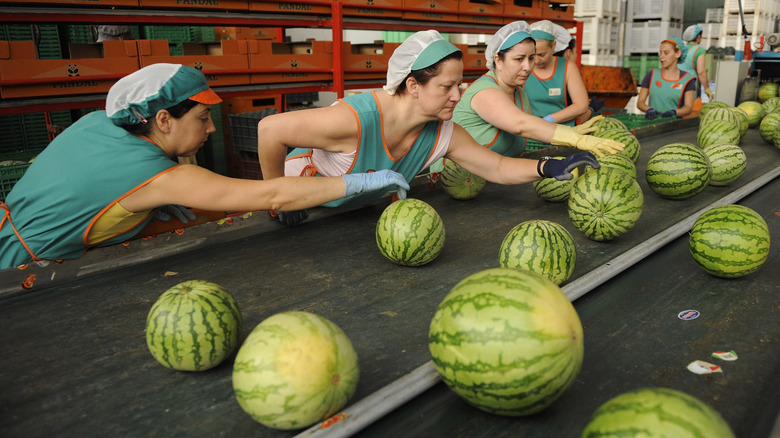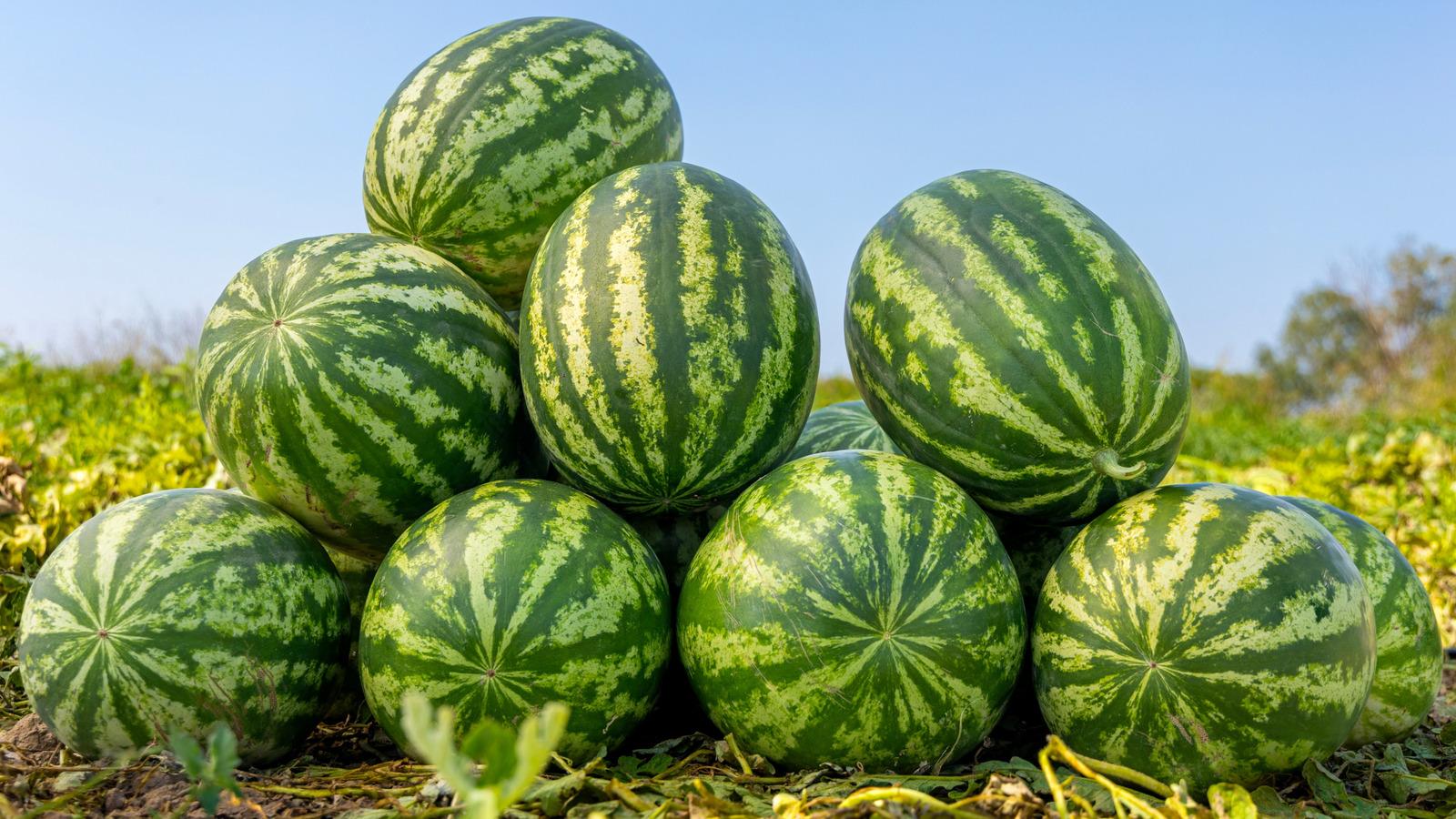
sadecestock/Shutterstock
The taste of a ripe, juicy watermelon is a true delight for fruit lovers, especially on a hot summer day. It's not just about the flavor; there are other reasons why you should start eating more watermelon, like its hydration benefits. Though it might seem like an all-American delight, the reality is that the world's largest producer of this crop is actually half a world away. China occupies a unique spot in the global consumption of watermelon.
According to 2023 data from the Food and Agriculture Organization of the United Nations (FAOSTAT), China produced a jaw-dropping 63,960,353 metric tons of the fruit that year, by far the most in the world. In fact, its output was over 17 times more than the country in second place, India, which grew and harvested a comparably meager 3,626,000 metric tons. Turkey rounded out the top three with 3,147,921 metric tons of watermelon produced in 2023.
China's 2023 watermelon production was so significant that it singlehandedly outpaced the rest of the top 10 watermelon-growing nations combined. Though it might surprise some, those who are familiar with Chinese culture know that watermelons are popular hostess gifts in China for a variety of reasons, from their favorable shape in feng shui to the positive cultural connotations of its bright-red flesh.
The US grows much less watermelon than China

Denis Doyle/Getty Images
Watermelon production is dependent on a region's climate thanks to the fruit's long growing season and low tolerance for cold temperatures. It should come as no surprise, then, that nearly a dozen countries don't or can't produce watermelons at all, according to FAOSTAT. These are primarily located in northern or central Europe, where the climate is often inhospitable to growth at any commercial scale.
The U.S. comes in seventh overall, producing 1,682,669 metric tons of watermelon in 2023. Here in the States, production is also strongly concentrated in one region: the Sun Belt. Florida, Georgia, Texas, and California make up roughly ¾ of domestic watermelon growing, according to 2021 USDA data. Even among this limited group, Florida stands out, accounting for ⅓ of that year's American production on its own.
In addition to what we produce domestically, the U.S. also imports roughly 1,419,140 metric tons of watermelon, primarily from Central American neighbors like Mexico, Guatemala, and Honduras (via World Integrated Trade Solution). With so much information about the production of this beloved fruit, you'll have plenty to chew on the next time you savor a refreshing slice. No matter where it comes from, though, be sure to avoid the mistakes everyone makes with watermelon, like keeping slices at room temperature for more than two hours.



